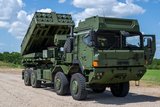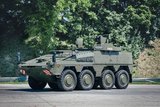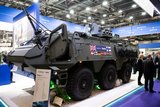Demonstration blends Stinger and Javelin capabilities
Raytheon Missiles & Defense claims to have successfully completed the ‘first-ever demonstration’ for the US Army of a Stinger missile fired from a Javelin Lightweight Command Launch Unit (LWCLU).
‘The missile engaged and defeated an unmanned aerial vehicle (UAV), validating the capability of the combined systems to defeat emerging threats on land and in the air,’ Raytheon announced on 12 March.
In the test at Eglin AFB, soldiers from the Mississippi National Guard used a Sentinel radar simulator and a Forward Area Air Defense C2 system to track the target UAV, allowing the gunner to engage the aerial target with a Stinger Block I proximity fuse missile through the networked LWCLU.
Shephard reported in 2019 that the effective range of the LWCLU with the G-model Javelin missile will be 4.5km and with older Javelin missiles 4km based on modelling, as opposed to the flat 2.5 km with the old CLU.
‘Because LWCLU can defeat both land and aerial threats, it’s easier for soldiers to use in complex environments,’ said Tom Laliberty, VP of the land warfare and air defence business area of Raytheon Missiles & Defense. ‘It reduces the burden of carrying additional gear.’
According to Raytheon, the LWCLU enables standalone ISR missions as well as functioning as a Javelin launcher.
The system weighs 30% less than its predecessor and offers twice the sight range at night and three times the site range during the day, regardless of weather conditions, the company added.
As part of our promise to deliver comprehensive coverage to our Defence Insight and Premium News subscribers, our curated defence news content provides the latest industry updates, contract awards and programme milestones.
Related Equipment in Defence Insight
More from Land Warfare
-
![Lithuanian 1st Division to achieve initial operating capability in 2026]()
Lithuanian 1st Division to achieve initial operating capability in 2026
Lithuania is one of the countries stepping up its defences in the face of the war in Ukraine with a particular focus on its neighbour and Russian ally Belarus, which has been making incursions into Lithuania’s airspace with balloons and drones.
-
![Beyond Survivability: How Active Protection Systems Are Empowering Commanders (Podcast)]()
Beyond Survivability: How Active Protection Systems Are Empowering Commanders (Podcast)
As threats diversify and intensify, APS are proving essential not just for vehicle protection but also for enhancing operational freedom, effectiveness and mission success in contested environments.
-
Medium knocked out of British Army LMP, with CAVS as heavyweight champion
As the British Army seeks to modernise and consolidate its diverse vehicle fleet, yet another change in direction is underway.






















